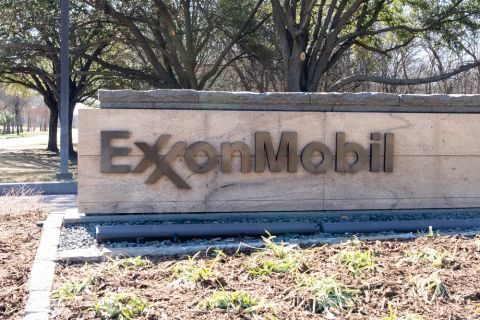
Found at depths between 1,500 and 6,500 feet, the Fayetteville Shale occurs below the Pennsylvanian sands that are major conventional gas reservoirs in the Arkoma Basin Fairway. The Arkansas shale compares favorably to other gas-producing shales: it is thermally mature, its total organic carbon content ranges between 4% and 9.5%, and its gas contents are between 60 and 220 standard cubic feet per ton. Gas-in-place is estimated between 58- and 65 billion cubic feet (Bcf) per section.
The Fayetteville is a genuine exploratory play, as the prime areas of thick shale do not coincide with the developed Fairway. The shale expands from a thickness of 50 feet in the Fairway to as much as 325 feet in the counties to the east.
Since early 2003, when Southwestern launched a major lease acquisition program, it has amassed 724,000 net acres in the undeveloped play area. In addition, it holds 125,000 net acres by production in the Fairway. On its undeveloped leasehold, its land costs have averaged about $75 per acre with royalties of 12.5%.
“The part of the basin we were focusing on was a very rural area that had never had any real production, so we were able to lease without attracting wide attention,” says Harold Korell, Southwestern Energy Co. president, chairman and CEO.
The company launched its Fayetteville drilling program in 2004 in Conway County. Its first project in the undeveloped play area was in its Griffin Mountain pilot area, which it selected based on geologic parameters and its proximity to one of the two pipelines that traverse the eastern end of the Arkoma. The wells were drilled to depths near 4,400 feet and fracture-stimulated.
By year-end 2004, Southwestern had 10 vertical wells on production, making between 100,000 and 500,000 cubic feet of gas per day apiece and little to no water. The company booked total proved reserves of 7.5 Bcf from 10 wells and 10 proved undeveloped locations at year-end 2004.
As of the end of October, Southwestern had upped its total well count to 66, plus one outside-operated well, and was producing 12 million cubic feet a day from the play. The wells are sprinkled among 10 pilot areas in Conway, Faulkner, Van Buren, Franklin and Cleburne counties. The company expects to drill between 60 and 70 wells and produce about 2 billion cubic feet equivalent from the budding play for last year.
The company made horizontal drilling a big push of last year’s activities. Eighteen of the 67 wells drilled to date are horizontal tests, with laterals ranging between 1,800 to 2,300 feet. At press time, a dozen of the horizontal wells were completed, two were waiting on completion, one was temporarily abandoned because of mechanical problems and three were drilling. The average initial rate for a completed horizontal is 2.5 million cubic feet per day, excluding the first well that had stimulation problems.
Based on its experiences to date in the emerging trend, Southwestern estimates ultimate recoveries for horizontal wells between 1.3- and 1.7 billion cubic feet equivalent each. Completed well costs are between $1.4- and $1.8 million for horizontal wells, which is down substantially from the $2.1 million-average for the initial horizontal tests.
“We’ve learned rapidly on the first few horizontal wells,” says Richard Lane, executive vice president. “We started out with a conservative design, and we’re fine-tuning that as we gain experience.”
A crucial element for the success of most shale plays is the ability to effectively fracture the reservoir, and the Fayetteville is no exception. Even horizontal Fayetteville wells must be stimulated to produce, and Southwestern has been experimenting with several fracturing treatments, including nitrogen-foam and slick-water fracs. It also employs microseismic techniques to calibrate fracture lengths and azimuths.
A recent notable development is the success of its No. 4- 2 McNew, in the company’s Gravel Hill Field. This is the first horizontal wellbore stimulated with a slick-water frac, and initial results are positive, with the well exhibiting a low decline rate in its first weeks on line. The company plans to perform additional slick-water treatments.
Selection of the best locations for pilots is an added issue. A defining characteristic of the Arkoma Basin is its structural complexity, from many down-to-the-basin normal faults and thrust faults. Initially, the company picked highly faulted areas for its pilots on the assumption that naturally fractured rock would yield strong gas production rates, but now it targets less disturbed areas where the fracture treatments are easier to control.
By the close of this year, it intends to have drilled an additional 35 to 40 pilots to test the bulk of its acreage. These wells will supply it with a wealth of data across its acreage holdings. One effort of particular interest is the efficacy of horizontal wells in the Fairway area, where the Fayetteville is thinner, but the company’s extensive held-by-production position is laced with infrastructure.
Southwestern’s plans for this year call for spending of about $300 million and drilling between 175 and 200 wells in the play. With its immense position, Southwestern has years of activity ahead of it, and it wants to ensure rig availability doesn’t hamper its programs. Toward that end, the company recently committed to buy 10 new rigs from a private manufacturer. The first rig was scheduled to be drilling at the end of last year, and by year-end, the company should have up to 15 rigs at work in the play.
“The Fayetteville Shale is a huge logistics and transportation project. This is a major manufacturing-style play in an area with very little infrastructure. We have a lot of work to do,” says Korell.
Although Southwestern launched the Fayetteville and had the shale all to itself for a while, its success has invited competition. Since news of the Fayetteville’s potential broke, Oklahoma City-based Chesapeake Energy has picked up some 600,000 acres and expects to begin a drilling program shortly. It has already filed for several permits. XTO Energy, headquartered in Fort Worth, Texas, and the largest gas producer in Arkansas, holds 100,000 acres in the shale play outside of its considerable Fairway position. The company plans a pilot program in the second half of this year.
Houston independent Contango Oil & Gas Co. started leasing in March in the play, and has acquired 37,000 acres with its partners. It expects to raise that position to at least 40,000 acres and begin a six-well horizontal drilling program by mid-year. Edge Petroleum, also of Houston, has picked up acreage as well. The company has 5,000 net acres and will start a drilling program in the first half of the year.
Another new entrant is Fort Lauderdale, Fla.-based Maverick Oil & Gas Inc. The firm has leased 11,000 acres and gathered commitments for another 70,000 acres, mainly in Woodruff and St. Francis counties. Touchstone Resources USA Inc., based in Houston, and Bamco Gas LLC are partnering with Maverick in a joint venture.
Recommended Reading
Walking the Talk: Exxon Mobil Makes CCUS Strides
2024-06-27 - Exxon Mobil is developing a low-carbon intensity hydrogen plant using natural gas as feedstock and carbon capture in Baytown, Texas.
Nature’s Way: Biotech Companies Capturing Carbon, Revenue
2024-07-10 - Executives from Occidental Petroleum-backed Cemvita, Carbon Optimum and Novonesis share insights into how CO2 could be used for biofuels, fertilizer, food, proteins, plastics and even oil.
Occidental’s 1PointFive Agrees to Sell Carbon Credits to Microsoft
2024-07-09 - 1PointFive said the agreement marks the largest single purchase of CO2 removal credits enabled by direct air capture to date.
Occidental’s Stratos DAC Project on Track for 2025 Startup
2024-08-12 - Occidental Petroleum’s direct air capture commercial-scale facility in Texas is designed to capture up to 500,000 metric tons of CO2 annually.
CF Industries Enters CO2 Transport, Sequester Deal with Exxon
2024-07-28 - CF Industries Holdings will transport and sequester to Exxon Mobil CO2 from its carbon capture and sequestration project in Yazoo City, Mississippi.





